Kerbal Space Program: Asteroid Redirect Mission hands-on
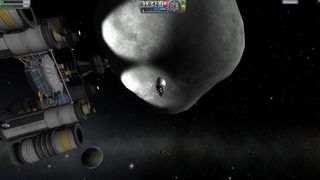
Confession: I'm playing imaginary NASA every time I play Kerbal Space Program . The brilliant space exploration sim can be customized with any flag, so I could be playing as the Federation of Planets, the Empire or Rebel Alliance, or as an independent Browncoat. But no. I fly my toy rockets under the NASA flag, and I don't care who knows it.
So it was with immense pleasure that I checked out the upcoming update for KSP, which has grown from goofy experiment to one of Steam's most popular Early Access games. Produced in collaboration with NASA, the Asteroid Redirect Mission adds asteroids to the Kerbal universe. The rocket part inventory has swelled to over 180, including several new super-heavy lifters and enormous fuel tanks. The NASA logo is now officially included in the default flag roster, and the new rockets have NASA emblems painted on. It makes a nerd heart flutter.
The main event for this update, though, is the opportunity to capture an asteroid. To find these new objects in the deep black, I bring up the satellite tracking station and zoom way, way out. Asteroids of various sizes—classed A (tiny) through E (huge)—pop up as unconfirmed sightings across the local area. Clicking an asteroid gives me the option to track it, which assign it a unique name and adds it to my map as an orbiting body. I'm on the look-out for an easy target, as Squad's PR manager, Miguel Piña, warned me that “Catching an asteroid is probably one of the hardest things to do in KSP now... I would strongly recommend you go for a class B or lower, as larger ones are truly hard to move around.”
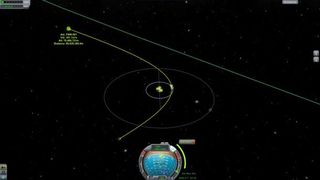
I dismiss a few potential targets hurtling through the local system too fast. Most of the asteroids I see are too big, and a few are on a collision course for Kerbin. I skip those as well; Jebediah Kerman is a good pilot, but he's no Bruce Willis. Finally, I spot Ast. FNW-501, a class A asteroid on a slow, lazy arc through the Kerbin neighborhood. Perfect.
The business end of the asteroid capture mission is the new mechanical grappling claw. The claw is an ungainly nose attachment that, when deployed, treats the surface of an asteroid as a docking port and latches on.
Let's pause and reflect here. I'm building a colossal rocket to fly to a lonely piece of space rock and, once there, my plan is to... headbutt it. It's ridiculous. And actually based on a real-life, future NASA mission .
My space rock
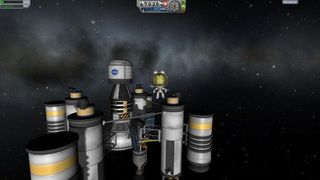
When I spoke to lead designer Felipe Falanghe in December , he mentioned that the team was close to solving the “wiggle problem,” where larger rockets and space stations tend to flex at the joints, sometimes catastrophically. They've done it in the newest build. With the help of the new NASA rocket parts and the super-solid rocket connections, I built the largest rocket I've ever made in KSP and flew it to orbit without reinforcing every joint with struts. The added stability makes flying much more fun.
The biggest gaming news, reviews and hardware deals
Keep up to date with the most important stories and the best deals, as picked by the PC Gamer team.
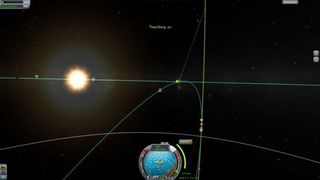
Flying out to meet FNW-501, the somewhat fiddly maneuver node controls become a problem. The slightest adjustment means missing the asteroid by hundreds of kilometers, even while using my mouse's scroll wheel to fine-tune the trajectory. I spent too long trying to make tiny changes to the flight plan; in the end, I just got a plan that was kind of close, then made a series of short burns to correct my flight path.
The orbital control plan is already a little tricky when you're aiming at a planet; trying to hit a rock five meters wide was a bit frustrating. I'd love a new control scheme here—or possibly a mod from the prolific fan community .
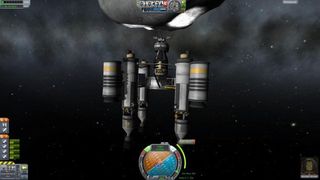
When all was said and done, meeting FNW-501 for my billion-dollar headbutt was a lot like docking with a space station in low Kerbin orbit. Once the claw engaged, I slowly turned the huge rock around, then lit my engines until our orbit brought us home. It flew like a brick, and I'm once again thankful that I tried my hand at a relatively small asteroid. FNW-501 is now in orbit, ready to be tested, mined, or deorbited and flung at Buenos Aires .
Players who have been in Kerbal Space Program for a while will find new things to do, new rocket parts, and a new rigid-body rocket system that will make it easier to build truly monstrous spaceships. Personally, capturing FNW-501 was the most white-knuckle piece of KSP piloting I've had to do since I landed on the moon the first time —and I got the same rush of accomplishment afterward.
The Asteroid Redirect Mission is currently going through bug fixing, so Squad isn't willing to give a firm release date just yet. Expect to hear a date announced sometime in the next few weeks.
Most Popular







